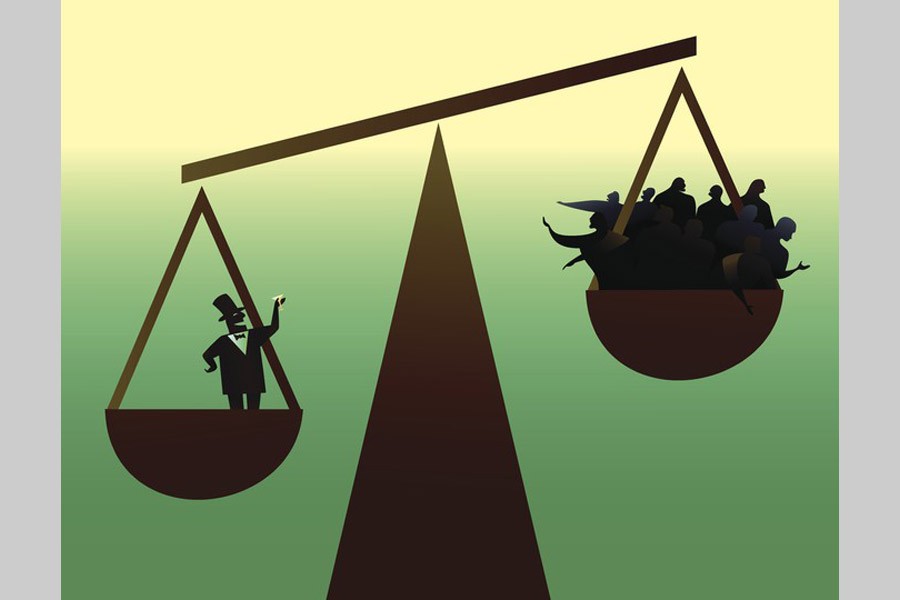Bangladesh continues to be a country of puzzles. The first puzzle comes from the economic growth and development attained during the last four decades or more, especially coming out of a war-ravaged situation and in the face of adverse resource base, bad politics and mismanagement. The shift from the basket case to a test case of development, out of the shadow of famine to a role model for developing countries and advancement in social sectors speak of the second puzzle. Increase in the growth of cereal production from 10 million tons in the immediate post-independence period to more than 30 million tons now, thanks to reforms and deregulation in the agricultural input distribution, goes to justify that development in Bangladesh is a puzzle as arable lands have been on a decline. Every year, food production has been increasing when 1.0 per cent of the cultivable land is lost. Further, the expansion of marketing of Bangladeshi RMG products word wide and the eagerness of branded companies to buy Bangladeshi products with 75 per cent women employed in the garments industry - is another puzzle.
However, in recent years another puzzle seems to have propped up. Recent data provided by different organizations, especially by the BBS, tend to show that the incidence of poverty has been declining but the rate of that reduction has tapered off. In other words, the rate of poverty reduction began to slow down since 2010. One needs to note here that Bangladesh has reaped home a recorded more than six and a half per cent economic growth per annum during this period. For example, during 2010 and 2016, the percentage of poor people dropped to 24 per cent , indicating a yearly decline of about 1.2 per cent. This compares with an annual reduction of poverty of 1.7 per cent from 2005 to 2010 as shown by the latest Household Income and Expenditure Survey (HIES) of the national statistical organization. But the good news is that the proportion of poor people dipped further to about 22 per cent last year.
It may be mentioned here that even at this slower pace of poverty reduction, the nation would be able to meet SDG target by eradicating poverty by 2030. En passant, the BBS carried out the survey on 46,080 households in 2016, nearly four times the samples taken in the previous 2010 survey.
In fact, the issue of accelerated growth and decelerated rate of poverty reduction has long been a major concern among economists, policy makers and practitioners. Economists are of the view that the unexpected situation could have been created by the spread of technology that was a boon for growth but a bane for employment generation. They also opine that unlike the export-oriented sector that is relatively more labour-intensive, growth has been spearheaded by the more capitalistic domestic production structure. WE may note the following points:
First, it appears that factors that fuelled the reduction in earlier years are no more relevant now asking for a shift in the gear of growth. Second, it's a puzzle that accelerated growth is accompanied with decelerated rate of poverty reduction thus questioning the quality of growth itself as trickle-down hypothesis did not seem to work well. This can possibly be substantiated by the slowdown in job creation especially the remunerative ones. Third, by the same breath, it also reveals the reasons for an increase in income inequality in society
It would perhaps not be pertinent at this stage to blame economic growth per se. At this stage, we feel tempted to say a few words on the role of the economic growth in poverty reduction. It is true that we have observed a decline in rural poverty in tandem with a 'satisfactory' rate of economic growth over time. And possibly for this reason, there is a scope to crown growth as the pinnacle of poverty reduction strategy. Eminent economist S.R. Osmani moves a step further to argue that proper distribution of wealth should always matter along with growth. This is because distribution not only helps poverty reduction, but also facilitates economic growth. One specific example used by him is the inability of a person to engage in productive activities in the wake of shortage of capital and the lack of access to credit. It is not that the person concerned is only deprived; but also the nation is being deprived of the additional output. So, proper distribution, poverty reduction and growth can run hand in hand. Unfortunately in our society, the message of the distribution is not as widely propagated as it is for only the growth. Again, only a pro-growth policy cannot be the magic lamp for poverty reduction. To conclude with Osmani's cogent comment:
Therefore, the pervasive presence of growth-devotees on all fronts needs to be contained. But that should never imply that growth has to be ignored or undermined - as it used to be often the argument in the 1960s. For the sake of poverty reduction, importance should be attached to growth. But it has to be remembered that attaching importance is one thing and, without other considerations, placing alter age at the altar of growth is another thing.
Abdul Bayes is a former Professor of Economics at Jahangirnagar University: [email protected]


